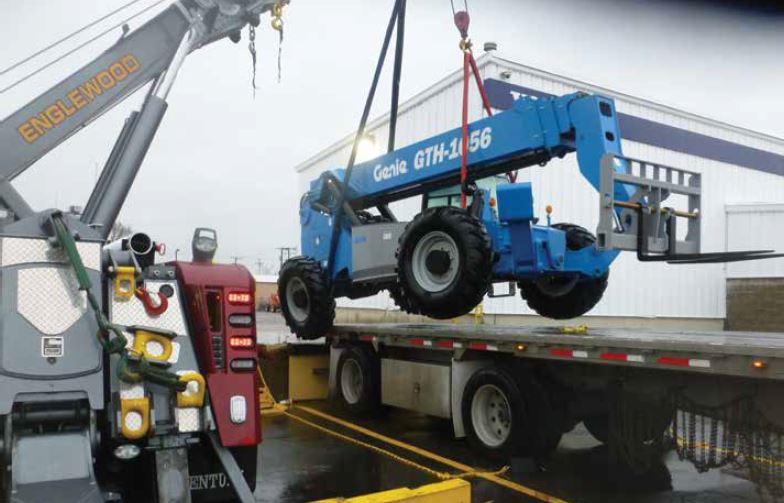
Once a load is picked up, you need to have a place to put it back down. Cribbing in one form or another often is that place.
Properly assembled cribbing constructed of a suitable material can provide a stable base for any object. If the cribbing is improperly assembled and/or made from inferior materials, it can provide the potential for dropped loads, damaged equipment, and injury to workers. This two part article gives an overview of available materials and techniques for building proper support cribbing.
Part 1
As with all activities, and in lifting and rigging in particular, planning is the key. Blindly driving forward into the unknown with no plan is a sure-fire recipe for disaster. If the first thing you think of when you pick something up is “Where am I going to put this down,” then you’re already too late. You should have thought of that long before you ever put the rigging on your load.
The thing that is very difficult to get through to people new to the environment is that lifting and rigging is an extremely dangerous activity when it is done wrong. Cribbing is exactly the same. The consequences of poor practice are often catastrophic both in terms of injury and material loss.
Background
Take part of a turbine, for example. It needs to be set down in a position where welders can work underneath. We all know that working under a suspended load is unsafe. The facility may have a custom-built stand or use a similar but different piece of equipment that is slightly smaller. Thus, the height of the stand is too low for the work to be completed. Furthermore, if the load is set down on the stand as it exists, it could rest on pipes that are welded underneath, which is not an option.
Applying cribbing to the stand to raise it up high enough to do the work could solve these problems, yet safety remains paramount. An object weighing 156,000 lbs., essentially symmetrical in both directions, taking the shape of a half cylinder could represent a common lifting—and cribbing— problem for Bruce Power.
Materials may look appropriate for cribbing, but you need to do your research. A material that looks strong but that is only designed for making flowerbeds, for example, is not going to support your load.
Mixing hardwood, softwood, and plastic in different combinations is also a bad idea because they react differently. They compress by different amounts and have different amounts of friction, so they are going to slip in varied ways.
At Bruce Power, we require a lift plan for every lift, and each plan includes direction about cribbing. I am proposing a policy in my work place that will approve hardwood, engineered plastic, and steel as cribbing and not permit the use of other materials, some of which will be discussed below. We’ll also provide guidelines for cribbing strength, care, and inspection. We will comply with a Ministry of Labor directive indicating that we have to put capacity on the side of cribbing materials.
Marked with capacity
In 2002, a guideline was published in Canada indicating that cribbing should have a capacity marked on it. That’s all it said. As it was in a regulation rather than in the legislation, it doesn’t have the force of law behind it. It was poorly proclaimed and not generally known far and wide out there on the job. While such guidelines are unlikely to prevent accidents alone, they should serve as a warning that, for example, plastic material with big holes in it cannot carry an accurate capacity. I use this material as an example because I am familiar with an accident that occurred in such a circumstance.
The American Society for Testing and Materials has also prepared guidelines on engineered plastic and composite materials, including one on cribbing-related failure for plastic lumber. The problem is not experienced with other materials. Plastic loaded as a deck will tend to creep at room temperature slightly and that’s something that wood, another cribbing material, does not do.
The plastics industry has published design guidelines for composite materials. Among the information buried deep in several papers that I managed to download from the plastics industry, there was a revelation that composite 4x4 timbers loaded in compression show approximately a 20% decrease in strength versus a 2x4 timber laid flat. That means that whatever its stated strength, a 4x4 plastic timber is automatically going to lose 20% of its strength right off the bat.
In Part 2, we introduce some of the cribbing materials and their properties.
Author: Fred Wolsey
Fred Wolsey is a mechanical and professional engineer. He has worked in the electrical power generation industry since 1985, and has been responsible for cranes and hoists at a power plant for the past 16 years. Wolsey has written maintenance and operating procedures for cranes and is the lead author of the Bruce Power Crane and Rigging Handbook.
Source: Crane & Rigging Hotline Magazine, July 2013 Issue